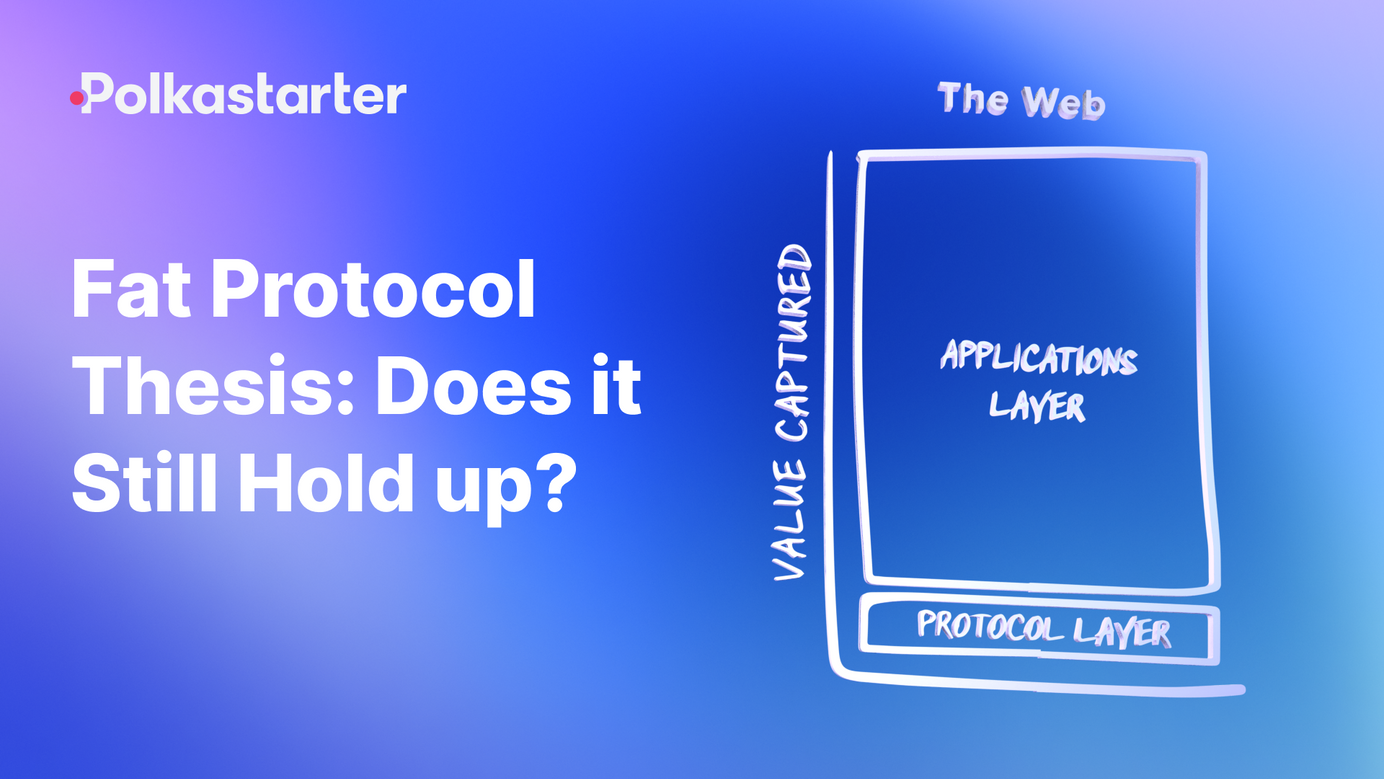
Fat Protocol Thesis: Does it Still Hold up?
Does the blockchain protocol still hold more value than dApps?
Today, things will get a bit more technical but bear with us as it will be to your benefit. We will revisit the Fat Protocol Thesis, an idea that was introduced back in 2016 by Joel Monegro. This idea explores the relationship between protocols and applications, showcasing the difference in structure and principle between the blockchain, and the Internet as we know it today. Let’s do this.
What is the Fat Protocol Thesis?
Before answering this question, it’s important to define what a protocol and an application are, as well the relationship between the two.
What is a network protocol?
A network protocol is a predetermined set of rules that define how data and information are transmitted between different end-points within a network. It’s the blueprint that determines how devices can communicate with each other, regardless of any discrepancies in their workflow, format or design.
What is an application?
An application is a computerized set program designed to carry out a specific function. It’s usually meant to be used by an end-user who has a very particular need or intent. Examples of applications are accounting software, personal finance apps or a social media platform.
How are protocols and applications related to each other?
This is best explained with the use of an example. The Internet we know and use on a daily basis is the protocol and things like Facebook, Google and Revolut are applications.
Now that we got our definitions out of the way, let’s revisit the initial question: what is the Fat Protocol Thesis? The thesis presents the change in dynamic between protocol and applications, from today’s internet to the blockchain. If you think about the Internet, most of the juice, value and usability, are found in applications, not the protocol itself.
We, as users, rarely interact with the Internet protocol as such. How data and information works behind the scenes is very little, to no use for us. The way to derive benefits from the use of the Internet sits on top of the protocol. Applications allow you to monetize the power of the protocol and either advertise, reach people around the world or use an application for your own convenience and benefit. You could say that the Internet operates on a “thin protocol-fat application” dynamic.
Enter the blockchain.
The blockchain, on the other hand, works in exactly the opposite way. The architecture and capabilities of the blockchain allow it to reverse the dynamic, allowing for a “thin application-fat protocol” mode operation. What that means is that most of the value for end-users is found on the protocol layer, rather than the application layer.
This is exactly what the Fat Protocol Thesis suggests: blockchain’s ability to offer most of its value at the protocol level.
Here are the two main reasons that make that possible:
Shared data layer
Blockchain technology is built on the principle of shared data. It’s a database technology that drives transparent data-sharing over a network. What does that do for the protocol? It makes it easier for people to access it and use it.
In the traditional form of the Internet, data and information were siloed in private servers, where only the select few could access and use. It would be costly and inefficient for people to try and get involved. With blockchain technology, things are completely different as the underlying technology invites people to access data and use it to their benefit.
The shared data layer allows for open and permissionless capabilities, greater competition and reduced barriers to entry.
Speculative token valuation
The second element that constitutes the Fat Protocol Thesis is the speculative token valuation. Blockchain networks are built with tokens. A token embodies a set of rules encoded in a smart contract. Each token belongs to a blockchain address. What that means is that people are incentivized to speculate on these tokens and build applications on top of the protocol.
The more applications built, the more a protocol will increase in value, creating a loop of value creation. Considering tokens are needed to access and use the protocol, their value also goes the more a protocol is used, creating a virtuous cycle. Assuming that the protocol gains value linearly, the thesis suggests that applications cannot accrue larger value than that of the underlying protocol.
Does the Fat Protocol Thesis still hold up?
6 years on from the publication of the Fat Protocol Thesis, things are no longer the same. Since then, there have been instances where the ERC-20 dApp layer market cap has exceeded ETH’s market cap. It can be argued that this was the result of speculative bubbles in dApp valuations.
Another school of thought is that the emergence of cross-chain infrastructure allows dApps to operate across multiple protocols, to prevent being ‘stuck’ on one protocol. By providing integrations to multiple protocol ecosystems dApps will reach different communities.
While the thesis still holds up in principle, it does show some cracks that could potentially overturn it. Here are the reasons leading to the Fat Protocol Thesis demise:
- No more protocol monopolism: multichain dApps
- Long-term protocol competition leading to lower fees
- New framework of thinking of L1 value capture: Currency vs. Nations
- Protocols were more than apps when the thesis was written. The more apps grow in number and quality, the more investment alternatives for investors
What’s important to note is that as crypto turns mainstream, new participants are more likely to be drawn to apps rather than protocols. Why? Because it’s something they recognise and are accustomed to.
Will the Fat Protocol Thesis hold value in two, three, or four years time? We’re excited to see how things turn out and you can rest assured, we’ll be here to report on it.
